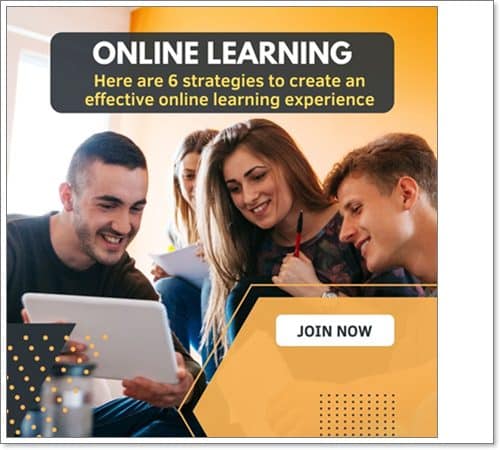COVID-19 transformed the learning environment dramatically in 2020, from elementary school to higher education institutions such as universities and colleges.
Administrators, educators, students, and teachers were forced to adapt to a virtual terrain rather than the usual face-to-face atmosphere following the pandemic. This necessitated the development of new learning management systems capable of simulating as much of the in-person learning experience as possible in virtual learning environments.
We’ll discuss 6 great e-learning tactics in this post to help you develop learning programs that will pique your learners’ interest, motivate them, and keep them engaged, no matter who they are.
1. Know your students
This goes without saying, but have you taken the time to get to know your students?
Every learning program aims to connect with the audience, but connecting with someone is impossible if you don’t know anything about them.
Analyze your audience and learn a thing about their character, habits, learning styles, and requirements to understand what they want from their e-learning experience.
Are they technologically aware enough to respond favorably to new technologies you wish to implement? Is their schedule so demanding that they can’t devote much time to learning? What is your learners’ educational background, learning ability, and learning preferences?
Different individuals learn in different ways. You won’t be able to uncover the aspects that contribute to an engaging learning experience until you know who you’re building your e-learning courses for.
2. Improve efficiency by adding more tools
The e-learning experience appears to take about the same amount of time as traditional classroom instruction, if not more. Tools, open-source technologies, and other programs, on the other hand, can make your job easier and reduce the time you spend on instructional activities.
Preply, for example, can help instructors with a range of activities in a remote learning setting. Education forms and templates can be used to manage real-time progress, grades, attendance, assignment tracking, and more.
With a virtual classroom, you can also manage your course content, such as video content, readings, assignments, and group discussions. This frees up time for you to devote to teaching, guiding students, or doing other activities.
3. Create a list of specific learning objectives
Why would anyone want to study anything unless they knew exactly what they were going to use it for?
Setting specific learning objectives at the start of each course will help your students see the value of their learning and how it will help them develop and enhance their abilities and create the ideal learning environment.
Furthermore, creating learning goals will add value to your learning programs for your students and greatly assist you in developing a clear course outline.
All of the other components of your content production approach will fall into place after you’ve defined your goals.
4. Make interactive learning programs
Incorporating interactivity into your learning programs is critical in ensuring that students are engaged in what they’re learning and remain focused as they advance through the course.
Both of these factors help to increase engagement, as boredom and distraction are the biggest enemies of engagement.
From simple drag-and-drop interactions to converting your presentation into an interactive e-learning course and developing an interactive virtual classroom environment, there are various approaches to constructing an interactive e-learning strategy.
Keep in mind that you aim to keep your audience engaged – knowing your audience makes it easier for you to identify interactive components that will keep them engaged.
5. Organize your e-learning courses
As having a clear framework, structuring your e-learning content is critical for a positive learning experience.
Organizing your training courses will prevent you from getting cognitive overload, which hinders learners from focusing on crucial ideas and participating in them.
Make sure your information is prioritized – what are the most critical points you want to convey? Which are the compulsory courses, and which ones are optional?
Consider utilizing action mapping to organize your themes and distribute them in a logical sequence to improve information retention. Well-organized learning materials will assist your students in absorbing course material more efficiently and rapidly. It will also allow you to deliver the knowledge in consistent ways with your e-learning objectives.
6. Make your learning modules as short as possible
Endless material is the quickest way to lose your audience’s attention — no one has unlimited time or patience to spend on their education, especially if they have a hectic schedule.
Keeping your learning modules brief will show your learners that you value their time, and it will also make it simpler for them to connect with the material since tiny pieces of knowledge are easier to connect with than endless tales, videos, and narration.
Breaking up your material into brief pieces, providing fast activities, and, if utilizing presentations, remember not to overburden your displays with text is the best course of action.

Leave a Reply
You must be logged in to post a comment.